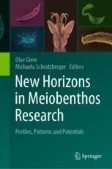Search
Search Results
-
Deep-Sea Life
The conditions at which life below 200 m in the water column and the deep seafloor in Mexico’s Exclusive Economic Zone in three regional seas...
-
Microbes as marine habitat formers and ecosystem engineers
Despite their small individual size, marine prokaryotic and eukaryotic microbes can form large 3D structures and complex habitats. These habitats...

-
Deep-sea glass sponges (Hexactinellida) from polymetallic nodule fields in the Clarion-Clipperton Fracture Zone (CCFZ), northeastern Pacific: Part II—Hexasterophora
The Clarion-Clipperton Fracture Zone (CCFZ) in the northeastern Pacific is a potential area for deep-sea mining, comprises the worldwide largest...

-
Movement patterns and residency of silvertip sharks (Carcharhinus albimarginatus) in a remote archipelago of the Eastern Tropical Pacific
The silvertip shark ( Carcharhinus albimarginatus ) is a reef-associated shark widely distributed across the Indo-Pacific. However, it has been poorly...

-
The Deep Sea
The deep ocean makes up the single, biggest portion of the earth’s biosphere. Of all the habitable space available for living things to occupy, at...
-
Studies of the movement ecology of sharks justify the existence and expansion of marine protected areas in the Eastern Pacific Ocean
We present a compilation of published telemetric results, complemented by the addition of new results where necessary, to justify the expansion of...

-
First insights into the phylogeny of deep-sea glass sponges (Hexactinellida) from polymetallic nodule fields in the Clarion-Clipperton Fracture Zone (CCFZ), northeastern Pacific
Glass sponges represent a dominant group of megabenthic deep-sea fauna and play a key role in benthic deep-sea ecosystems. Especially in the...

-
Short and decadal impacts of seafloor physical perturbation on the abundances of Lebensspuren ‘traces of life’ in the Peru Basin manganese nodule province
Interest in deep-sea mining for polymetallic nodules as an alternative source to onshore mines for various high-technology metals has risen in recent...

-
Ocean Governance
The ocean is the blue heart of our planet, providing many indispensable goods and services in addition to boundless inspiration. Consequently,...
-
What Role for Ocean-Based Renewable Energy and Deep-Seabed Minerals in a Sustainable Future?
Scenarios for sustainable transformation of the global economy to near zero greenhouse gas emissions in 2050 in line with the Paris Agreement and the...
-
Biogeography and population structure of predominant macrofaunal taxa (Annelida and Isopoda) in abyssal polymetallic nodule fields: implications for conservation and management
Abyssal plains of the Clarion Clipperton Fracture Zone (CCZ) in the NE Pacific Ocean probably harbour one of the world’s most diverse ecosystems....

-
Black corals (Anthozoa: Antipatharia) of the Clarion-Clipperton Fracture Zone
The antipatharian fauna of the Clarion-Clipperton Fracture Zone is discussed. Five species of black corals from three genera were identified in...

-
Deep-sea glass sponges (Hexactinellida) from polymetallic nodule fields in the Clarion-Clipperton Fracture Zone (CCFZ), northeastern Pacific: Part I – Amphidiscophora
The Clarion-Clipperton Fracture Zone (CCFZ) in the northeastern Pacific is the world’s largest area for potential deep-sea mining of polymetallic...

-
Deep-Sea Corals of the North and Central Pacific Seamounts
The North and Central Pacific are home to a number of major archipelagos including Hawaii, the Marianas, Samoa, Line Islands, Phoenix Islands, and...
-
Sustainable blue economy: Opportunities and challenges
The term ‘blue economy’, first introduced in 2010, is the sustainable use of ocean resources for economic growth, jobs, ocean health, and to improve...

-

-
Loricifera inhabiting spherical agglutinated structures in the abyssal eastern equatorial Pacific nodule fields
Loriciferans are known to survive in extreme environments, most notably in the case of a recently described Spinoloricus species from a hypersaline...

-
Deep-Sea Meiofauna—A World on Its Own or Deeply Connected?
The deep sea is Earth’s most typical environment and meiofauna its most common and arguably its most diverse metazoan inhabitants. They are therefore...
-
Lower Slope and Abyssal Benthic Decapods of the Eastern Pacific
A total of 119 species of decapod crustaceans have been reported from depths of 700 m or more in the eastern Pacific. From 1875 to 2000, decapods...
-
High diversity and pan-oceanic distribution of deep-sea polychaetes: Prionospio and Aurospio (Annelida: Spionidae) in the Atlantic and Pacific Ocean
Prionospio Malmgren
1867 and Aurospio Maciolek1981 (Annelida: Spionidae) are polychaete genera commonly found in the deep sea. Both genera belong to...
